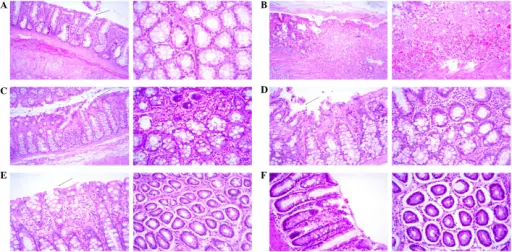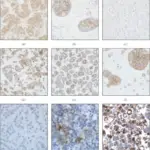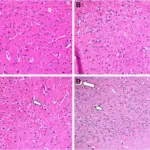
Histopathological examination of colonic sections (Left panels, magnification ×10; right panels, magnification ×20). (A) Minimal surface necrosis and ulceration (arrows) with no inflammatory cell infiltration, edema or hyperemia was observed in the control group. (B) Severe surface ulceration, necrosis, edema, hyperemia and inflammatory cell infiltration (arrows) was observed in the acetic acid-treated group. (C) Moderate surface necrosis, ulceration, edema, hyperemia and inflammatory cell infiltration (arrows) was observed in the 125 mg/kg/day myrrh-treated group. (D) Mild surface necrosis, ulceration, inflammatory cell infiltration, edema and hyperemia (arrows) was observed in the 250 mg/kg/day myrrh-treated group. (E) No evidence of surface ulceration or necrosis and minimal inflammatory cell infiltration, edema and hyperemia (arrows) was observed in the 500 mg/kg/day myrrh-treated group. (F) Minimal focal surface necrosis, ulceration, edema, hyperemia and inflammatory changes (arrows) were observed in the 300 mg/kg/day mesalazine-treated group. Myrrh attenuates oxidative and inflammatory processes in acetic acid-induced ulcerative colitis. Fatani AJ, Alrojayee FS, Parmar MY, Abuohashish HM, Ahmed MM, Al-Rejaie SS - Experimental and therapeutic medicine (2016). Not Altered. CC.
Hyperemia is an excess of blood in vessels supplying a particular organ or limb.
What is the Pathology of Hyperemia?
The pathology of hyperemia is:
-Etiology: The cause of hyperemia varies greatly, from exercise, inflammation, to organ failure.
-Pathogenesis: The sequence of events that lead to hyperemia is the excess blood that builds up inside the vascular system.
-Morphology: The morphology associated with hyperemia shows active dilation of vasculature.
How does Hyperemia Present?
Patients with hyperemia typically are older males or females. The symptoms, features, and clinical findings associated with hyperemia include bright red in color, warmth, and swelling.
How is Hyperemia Diagnosed?
Hyperemia is diagnosed with a physical exam and a test for reactive hyperemia that helps measure blood flow.
How is Hyperemia Treated?
Hyperemia is treated with medications for hyperemia which may include beta-blockers, blood thinners, and digoxin.
What is the Prognosis of Hyperemia?
The prognosis of hyperemia is fair.



